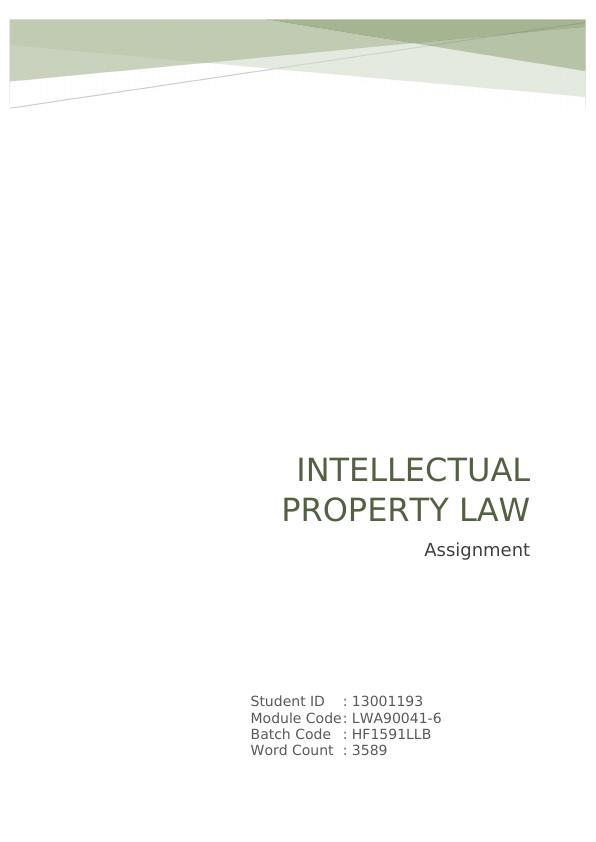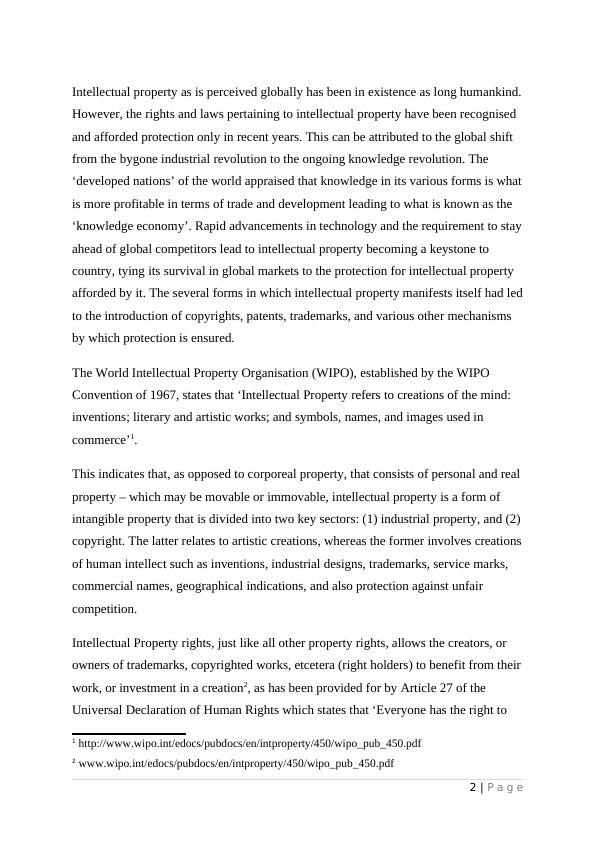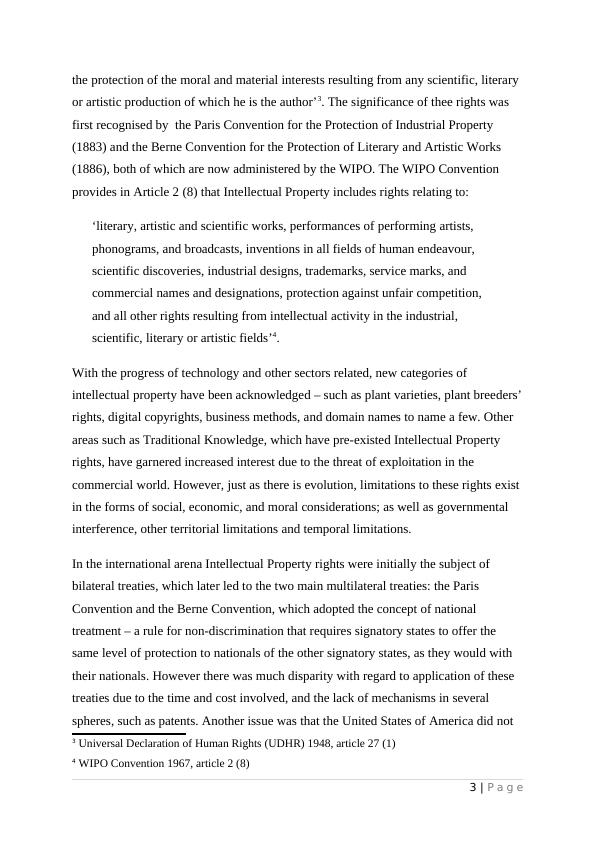The African Katempfe Berry Intellectual Property Law Assignment
Added on 2021-07-05
17 Pages4025 Words476 Views
INTELLECTUALPROPERTY LAWAssignmentStudent ID : 13001193Module Code: LWA90041-6Batch Code : HF1591LLBWord Count : 3589

Bio-piracy and Commercialisationof Ethno Botanical Knowledge ***The African Katempfe Berry1 | P a g e

Intellectual property as is perceived globally has been in existence as long humankind.However, the rights and laws pertaining to intellectual property have been recognised and afforded protection only in recent years. This can be attributed to the global shift from the bygone industrial revolution to the ongoing knowledge revolution. The ‘developed nations’ of the world appraised that knowledge in its various forms is whatis more profitable in terms of trade and development leading to what is known as the ‘knowledge economy’. Rapid advancements in technology and the requirement to stayahead of global competitors lead to intellectual property becoming a keystone to country, tying its survival in global markets to the protection for intellectual property afforded by it. The several forms in which intellectual property manifests itself had ledto the introduction of copyrights, patents, trademarks, and various other mechanisms by which protection is ensured.The World Intellectual Property Organisation (WIPO), established by the WIPO Convention of 1967, states that ‘Intellectual Property refers to creations of the mind: inventions; literary and artistic works; and symbols, names, and images used in commerce’1. This indicates that, as opposed to corporeal property, that consists of personal and realproperty – which may be movable or immovable, intellectual property is a form of intangible property that is divided into two key sectors: (1) industrial property, and (2)copyright. The latter relates to artistic creations, whereas the former involves creationsof human intellect such as inventions, industrial designs, trademarks, service marks, commercial names, geographical indications, and also protection against unfair competition.Intellectual Property rights, just like all other property rights, allows the creators, or owners of trademarks, copyrighted works, etcetera (right holders) to benefit from theirwork, or investment in a creation2, as has been provided for by Article 27 of the Universal Declaration of Human Rights which states that ‘Everyone has the right to 1 http://www.wipo.int/edocs/pubdocs/en/intproperty/450/wipo_pub_450.pdf2 www.wipo.int/edocs/pubdocs/en/intproperty/450/wipo_pub_450.pdf2 | P a g e

the protection of the moral and material interests resulting from any scientific, literary or artistic production of which he is the author’3. The significance of thee rights was first recognised by the Paris Convention for the Protection of Industrial Property (1883) and the Berne Convention for the Protection of Literary and Artistic Works (1886), both of which are now administered by the WIPO. The WIPO Convention provides in Article 2 (8) that Intellectual Property includes rights relating to: ‘literary, artistic and scientific works, performances of performing artists, phonograms, and broadcasts, inventions in all fields of human endeavour, scientific discoveries, industrial designs, trademarks, service marks, and commercial names and designations, protection against unfair competition, and all other rights resulting from intellectual activity in the industrial, scientific, literary or artistic fields’4.With the progress of technology and other sectors related, new categories of intellectual property have been acknowledged – such as plant varieties, plant breeders’rights, digital copyrights, business methods, and domain names to name a few. Other areas such as Traditional Knowledge, which have pre-existed Intellectual Property rights, have garnered increased interest due to the threat of exploitation in the commercial world. However, just as there is evolution, limitations to these rights exist in the forms of social, economic, and moral considerations; as well as governmental interference, other territorial limitations and temporal limitations.In the international arena Intellectual Property rights were initially the subject of bilateral treaties, which later led to the two main multilateral treaties: the Paris Convention and the Berne Convention, which adopted the concept of national treatment – a rule for non-discrimination that requires signatory states to offer the same level of protection to nationals of the other signatory states, as they would with their nationals. However there was much disparity with regard to application of these treaties due to the time and cost involved, and the lack of mechanisms in several spheres, such as patents. Another issue was that the United States of America did not 3 Universal Declaration of Human Rights (UDHR) 1948, article 27 (1)4 WIPO Convention 1967, article 2 (8) 3 | P a g e

End of preview
Want to access all the pages? Upload your documents or become a member.
Related Documents
International Intellectual Property Law PDFlg...
|15
|5608
|227
Commercial Law Sample Paperlg...
|8
|3549
|106
Advanced Intellectual Property Lawlg...
|10
|2272
|324
Importance of Copyright Protection in the Modern Worldlg...
|10
|3154
|169
International Intellectual Property Lawlg...
|11
|3678
|2
Industrial and Intellectual Property Law: Meaning, Legislation, and Impact on Societylg...
|15
|5440
|206
